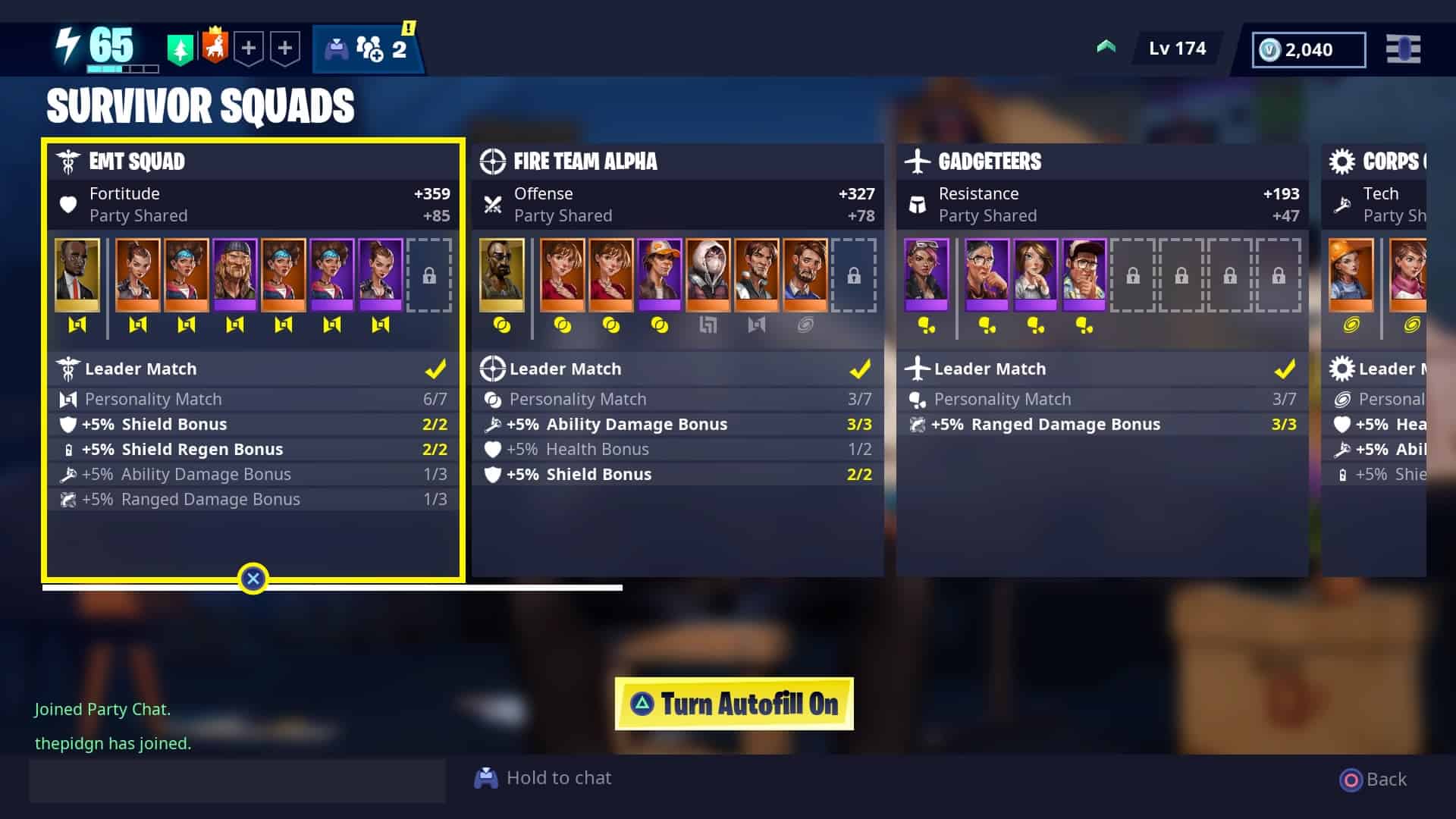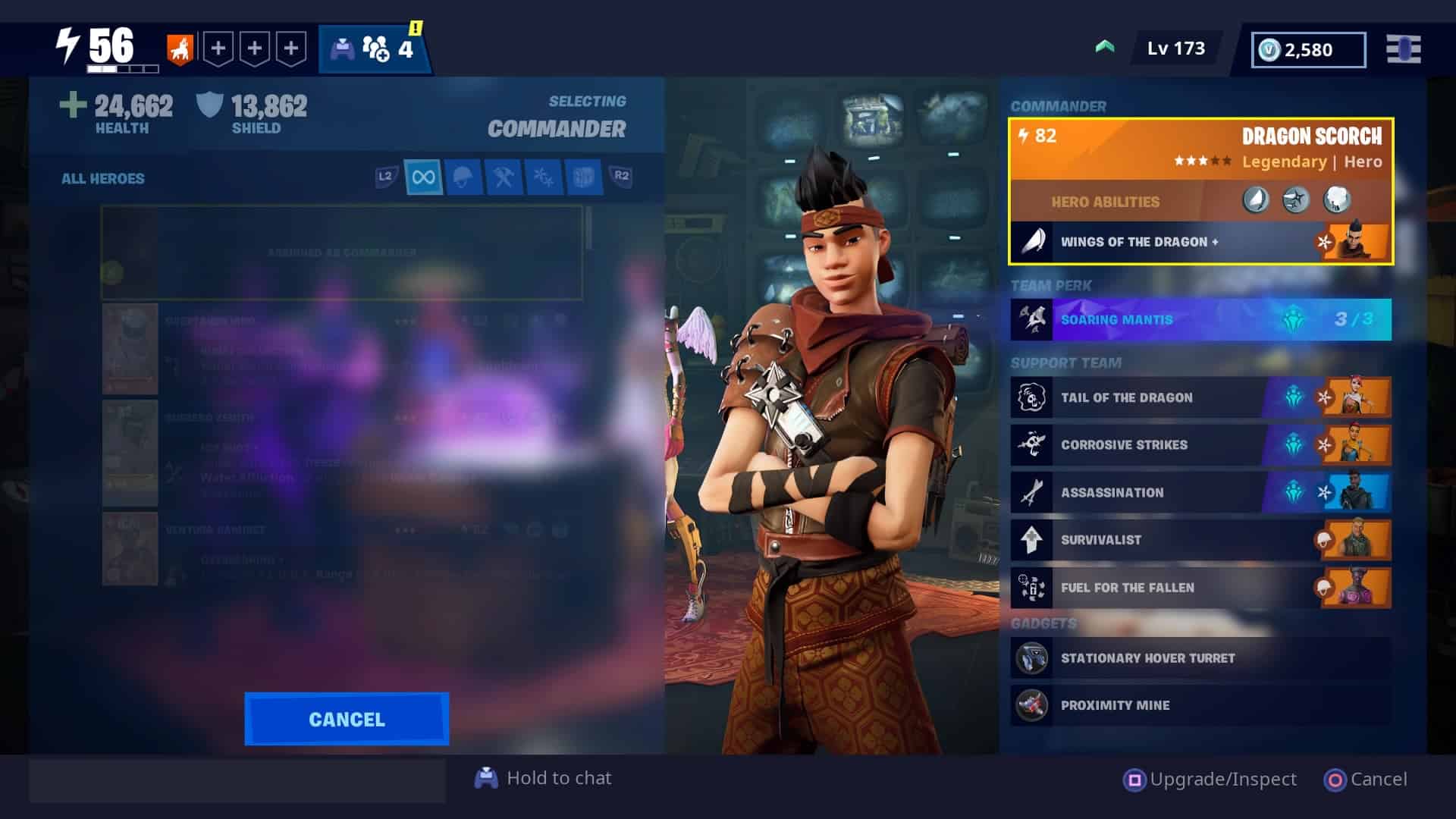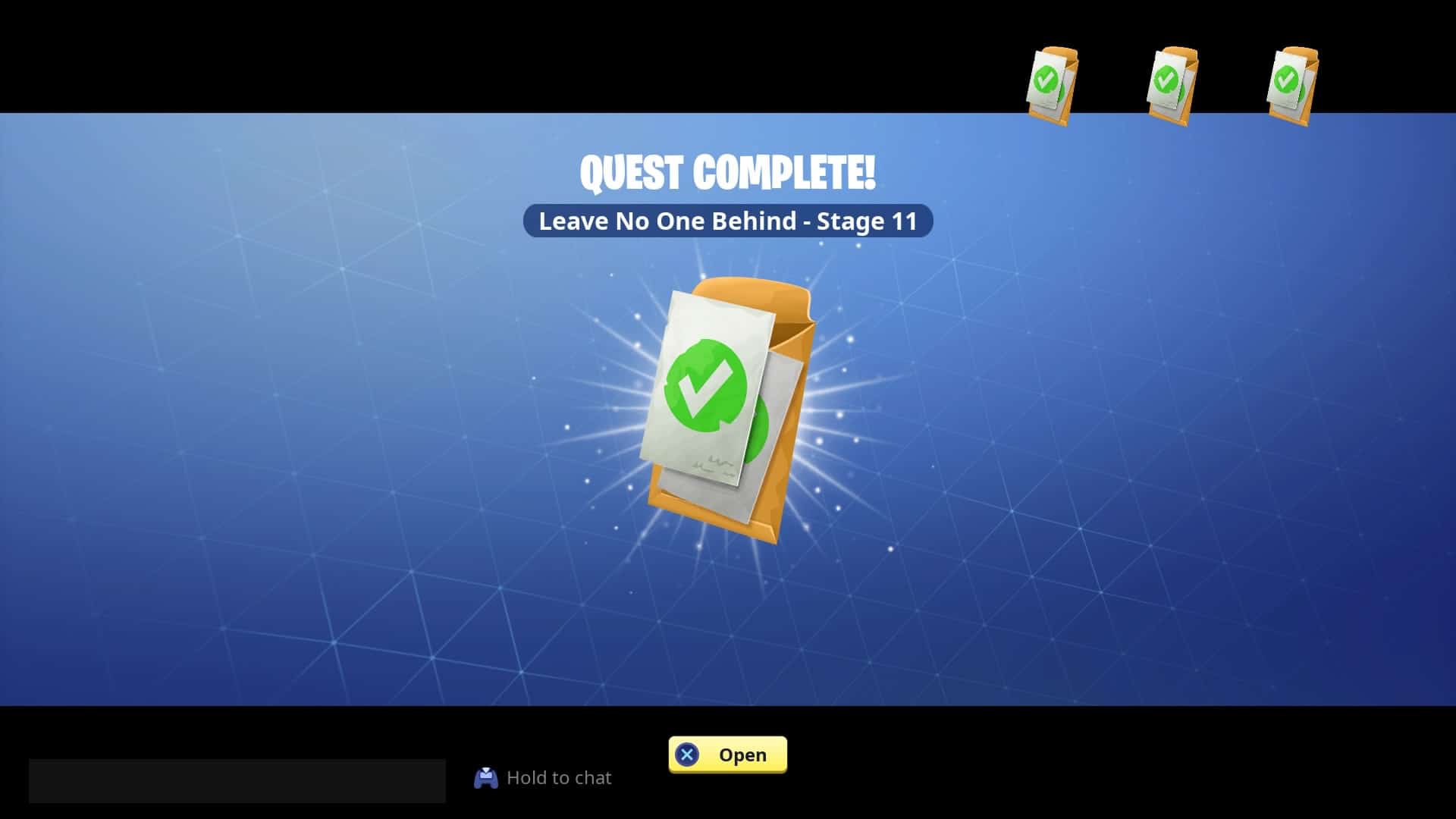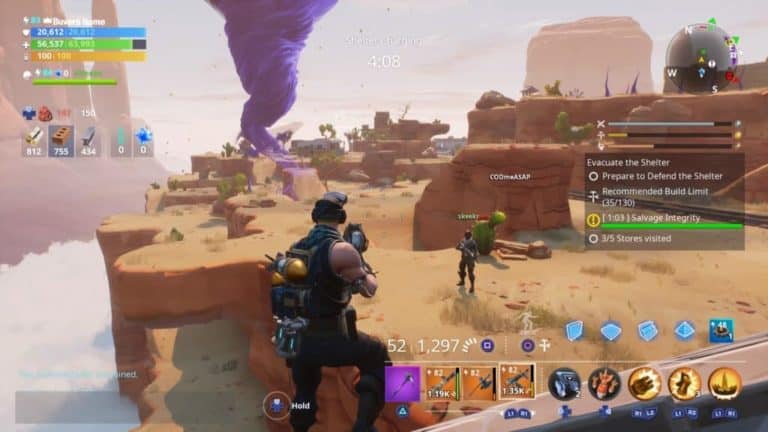Fortnite: Save the World is the PvE component of the cultural phenomenon known as Fortnite. As adults in our 30s, jaded and out of the loop, we wanted nothing to do with a game beloved by children and millennials. We’re all familiar with (and sick of hearing about) Fortnite’s slick building interface, addictive pickaxe-looting playstyle, and gag-worthy Disney-Frozen-esq aesthetics.
But in Save the World, players do more than shoot, build, and run. They choose from four hero classes, utilize unique skills, control their own stats, and assemble their own custom set of buffs to their chosen hero and skills. The game is generous to players, charmingly cooperative, and gamified in unusual places. There are so many thoughtful and well-designed aspects of Fortnite: Save the World that it might be the smartest co-op game on the market today.
Maps Are Like Arcades That Are Closing in an Hour
Main quests in Fortnite: Save the World have simple objectives. They require nothing more than discovering landmarks in a specified ecological zone or completing a few of the same mission type. Players select an appropriate mission in the appropriate zone on an enormous map that expands as they level up.
Missions are designed for four players. Depending on their level, all four players in a given mission may have different main quest objectives. They must not only search for their main quest objective but also complete the mission objective by successfully defending one or more map features. A player’s attention is therefore divided in two: mission objective and main quest objective. Plus, each map is chock-full of diversions such as caves full of ore, building challenges, and monster-crunching timed hazards that can net players toothsome loot or a better overall score.
Why get into the nitty-gritty of main quests, missions, and distractions? Therein lies the brilliance of Fortnite: Save the World’s map design. Maps are procedurally generated in several distinct and glamorous natural styles, but they have identical waypoints and challenges. The first time a player drops into a mission and sees a blue dot on the minimap he’ll discover it’s a NPC to be rescued. He’ll see a chest icon and come to know it’s a monster challenge that drops crafting materials; he’ll see an info bubble and realize it’s his mission goal; and he’ll see yellow exclamation points that mark his main quest objectives. As players advance into higher levels, the game trains them to recognize ever more specific map features, such as the types of buildings in a certain zone.
The tension between what you ought to do in a map, what you want to do, and what you can do to improve your mission score makes each map feel like a tantalizing challenge instead of the same crap with a different skin. More important, there isn’t enough time to do everything. Success (and high scores) in a map depends not only on players’ speed but also their ability to recognize, evaluate, and tackle map information as it’s revealed.
None of the four players are under any obligation to complete anything in the map except the mission objective, and many players are too preoccupied to show up for it at the end. The tug-of-war between what individuals want and what the team needs to pass is central in Fortnite: Save the World if you’re queueing with randoms. This isn’t a game where one player can carry the group (unless he is significantly overleveled), especially if you care about the mission rewards. We were grateful to be playing together—two players was usually enough to get the job done even if our groupmates didn’t take responsibility.
Building Is an Artist’s Challenge
Building in Fortnite: Save the World requires collaboration. In the beginning of the game, you can shoot enough zombies to prevent them from destroying the van, robot, or whatever you’re defending without building much or at all. As the game progresses, zombie hoards become dense and bloodthirsty. They destroy objectives in seconds and crush all but the most sturdy and well-articulated structures and defenses.
Meanwhile, the geography of the control points becomes more complex. Changes in elevation—cliffs, plateaus, hills, and water features—prohibit simple four-walled sheds. Instead players must adapt their structures to the terrain, expanding them, building them into natural features, and creating new architecture in every map.
If Fortnite had a clumsier building system, four players collaborating on a single structure would be hell. Instead, the simple and intuitive system, which allows players to add, edit, and rearrange building pieces at lightning speed, makes collaborative building one of the best parts of the game.
It’s awesome watching a skilled player build a Rube Goldberg machine that funnels armies of zombies into traps or build over obstacles in the terrain to create a heavily fortified structure with onion-like layers. It’s positively magical when strangers understand each other and work in harmony to create something in a video game. (The opposite scenario, in which a player turns your building into garbage and pisses you off, occurs once in a blue moon.) I can’t name another game besides Minecraft where other players’ creativity is constantly on display, and admiring (or spurning) it a central feeling.



In Minecraft, you don’t fail because of another player’s shoddy craftsmanship. In Save the World, it’s guaranteed your group will bomb if your structures aren’t up to snuff. With missions that take between 20 and 50 minutes, losing is an enormous waste of time and resources. Again, we were thankful that the two of us could collaborate to raise a decent barn if the two other players didn’t show initiative.
Buffing Your Hero: The Pleasure of Starting a Collection
In Save the World, there are three ways to buff your main. One method, research points, is straightforward. Each day you play you earn points to assign to tech, health, offense, or shield; high point totals in these categories also buffs your team during missions. The other two methods—choosing your hero’s support team and designing teams of “survivors”—are unusual and beguiling.
What makes Fortnite: Save The World’s system unique is that it relies on collecting in-game items rather than assigning or choosing skills and attributes. Both heroes and survivors have an assigned quality (from green to gold) and are provided to players as mission rewards or traded for game gold in the shop. Your hero’s power is determined by how well you can collect, monitor, improve, sort, and maintain your collections of survivors and heroes. Between missions you shuffle and rearrange staff like a hand in Gin Rummy.

Creating custom builds and buffing your hero works works similarly; collecting is the name of the game. There are four hero classes, each with four class skills. Individual heroes come preloaded with three of their class’ four skills. Choosing a hero comes down to finding one who has your three favorite skills, and—thanks to Save The World’s recently updated hero support system—signature ability. Using a hero as your main grants you his enormous, custom-designed buff, such as health returned on kill or the ability to float after using a skill; adding him to your main’s support staff gives a lesser version of the same buff. With a total of five support staff slots, collecting and leveling heroes with the best benefits is paramount.

The flexibility and diversity in Save the World’s hero support system is incredible. You can match any class with any weapon type. You can improve your movement speed or shorten a skill’s cooldown. Crappy skills become viable with the right buffs; good skills become great; and unusual hero bonuses can inspire you to create entirely new builds.
The system is fast and deadly simple; starting from scratch, swapping in new heroes, and leveling them takes just a minute or two. I don’t know any other game where you can create a new character and test him in a high-level mission in minutes. I was dumbstruck the first time I created a new character in Save the World and realized he would share the same backpack and use the same weapons my first toon used—no crafting or new gear required. Save the World’s system successfully incentivized us to try all its classes, and testing new skills and builds kept the gameplay fresh.
Combat Is Solid, Not Singular
Combat in Fortnite: Save the World doesn’t offer anything as brilliant or innovative as the other parts of the game. There are no amazing skills or mechanics I wish other games would adopt. However, nothing in particular is wrong with Save the World’s combat, and that’s saying a lot. Shooting is fun, solid, and works beautifully in third-person view. Melee combat is interesting and competitively balanced with shooting. Class skills seem balanced for combat effectiveness and for group size. Skills animate fluidly, and they work just how you’d expect. It adds up to fast, fun, and engaging combat.
If you know the laws of action-game land—take out the mob ringleaders first, time your skills so that they have the most impact, avoid damage when possible, and most important shoot the boss—you’ll function perfectly and be satisfied with the function of combat and mobs in Fortnite: Save the World.

We love the combat in Save the World compared to Battle Royale. There’s just a weapon— no skills or character classes—in Battle Royale. The two Fortnite games feel wildly different to play. There isn’t a clean transition from PvE to PvP—there’s no transition. Battle Royale is the type of game that our pigeon could play better than a human being. If he were trained to peck the screen when he sees another player, and pecking the screen fired his gun, I guarantee he would be faster and more accurate than even the guys playing on their PCs. (If you don’t believe me, check out this WW2 project that had pigeons targeting bombs.)
Neither of us takes much pleasure in being the fastest or most accurate player in a game—we take pleasure in making smarter build choices, having cooler gear, and testing weird skills. We wish Epic would explore a PvP mode that uses their PvE setup, but we understand that copying and re-skinning PUBG was a lot simpler than tackling the thorny balance and matchmaking issues that come with skill-and-ability-based PVP.
Zero-Waste and Naturally Accruing Gear and Rewards
One of the first—and most dreadful—actions you take in any game is to manage your inventory. Save The World was the first game we’ve played with a nearly zero waste philosophy. If you pour XP into a hero or weapon blueprint and later decide you don’t want it, Save the World generously returns most of your investment. (The only thing you don’t get back is the resource used to swap weapon bonuses.) Players could level up and gold a different gun for each mission if they wanted.
When weapons are recycled, they refund nearly as many materials as it took to craft them. When you receive a blueprint for a weapon you don’t want, recycling it gives you XP to level up weapons you do want. Useless or undesirable heroes and survivors work the same way—they turn into life-giving XP for those you appreciate. After playing Save the World, we feel cheated throwing useless legendaries on the ground or receiving a few plastic shards for recycling in other games.
When it comes to loot, Save the World is a land of plenty. The game wants you to consume and try everything, and it gives it to you in heaps. Heroes, survivors, and schematics flow fast and furious into your account from mission rewards and loot llamas.
In most games we play, getting the best weapons require hours of farming, grinding, looking up drop information online, and a lot of luck. Players have to pause work on their quests, latest map, or story arc and waste time doing the same thing on repeat and hoping for a lucky drop. A bot would do it better.
In Save the World, mission rewards, which include weapon XP as well as mats that allow you to alter or improve any item you wish, are listed and posted in advance of each session. Players can choose a mission that gives rewards they need. Plus, they can aim high, choosing only the most difficult missions to receive the biggest and best rewards.
Completing missions gave us more than enough game gold to buy all the heroes in the game shop as well as most upgrades we wanted without spending a lone U.S. dollar. There were times that Genevieve received a schematic for a legendary gun that turned out to be great; when John wanted it, he was able to find its lower-quality form in his inventory, upgrade it to gold, and use it in moments. I’d be thrilled if other games adopted Save the World’s gear system.
Conclusion: What’s Not To Like About Fortnite: Save the World?
Fortnite: Save the World is an unusual game that’s generous to players, cooperative in a cool way, and tons of fun not only when you’re slaughtering zombies but also when you’re in the menus designing your build and weapons. The PvE component may be free someday, but whether you spend $40, $20, or $0, you’ll receive a great game for the money. New game modes are released at a steady pace—if you’re a semi-regular player, there’s always something new to do.
However, I haven’t completely gotten over the idea that Fortnite is a game for children. It emanates twee little voices. The sound design while we’re running a mission reminds me of a room full of unpaid twenty-year-olds recording online ESL classes for four-year-olds.
Then there’s the variable reward system and phone-game practices. You gain resource points while you’re away from the game. Certain quests give nice “daily” bonuses. There’s heavy emphasis on time-limited sales of items in the gold shop and reward llamas’ fluctuating gifts.
These things may be easy to ignore, but manner in which Save the World presents rewards after each mission indicates you’re playing an idiotic phone game or taking part in some kind of consumer behavior experiment. First there’s a long animated sequence with treasure chests and jangly slot-machine noises. Then the screen turns blue like an ATM interface. You’re prompted to open a series of folders and examine their contents one item at a time. Even if you “collect all” to finish as quickly as possible, getting through the loot animations and folders at the end of a mission takes as long as several loading screens.


Does seeing each in-game item on its own captivate the human mind and make us crave more? Probably this interface is designed for mobile, and developers use it on console to keep the game uniform across platforms. I hope future console games don’t follow Fortnite’s lead by designing for mobile first—it degrades the game experience, turning it into an annoying way waste time in the waiting room at the dentist rather than a fun, interesting hobby worth working on for a few hours a week.
Phone-game tricks seem designed for children or the weak minded. Gamers don’t want them in a great game. We play games to escape from the everyday, not to be brainwashed, reminded of time passing, addicted to our phones, or nagged to complete more daily chores electronically for “fun.” For us, blurring the lines between “game time” and “real world time” comes at a heavy cognitive cost—we’re more likely not to sign in at all than to sign in to get our reward.
Though Fortnite: Save the World’s loot delivery system didn’t keep us from enjoying the heck out of the game, it’s worth mentioning in the context of Epic Games opening its own shop and children’s cravings for skins and cosmetics in Battle Royale. Is Epic worthy of our admiration? Is it a smart company bringing us slick gameplay, player-first design, and innovative games that are addictive because they’re so good? Or is it a company whose greatest product was a copy; a company that sold itself to our Chinese overlords; and is reaching its hand into our pockets like a filthy magician?
Highly Recommended






